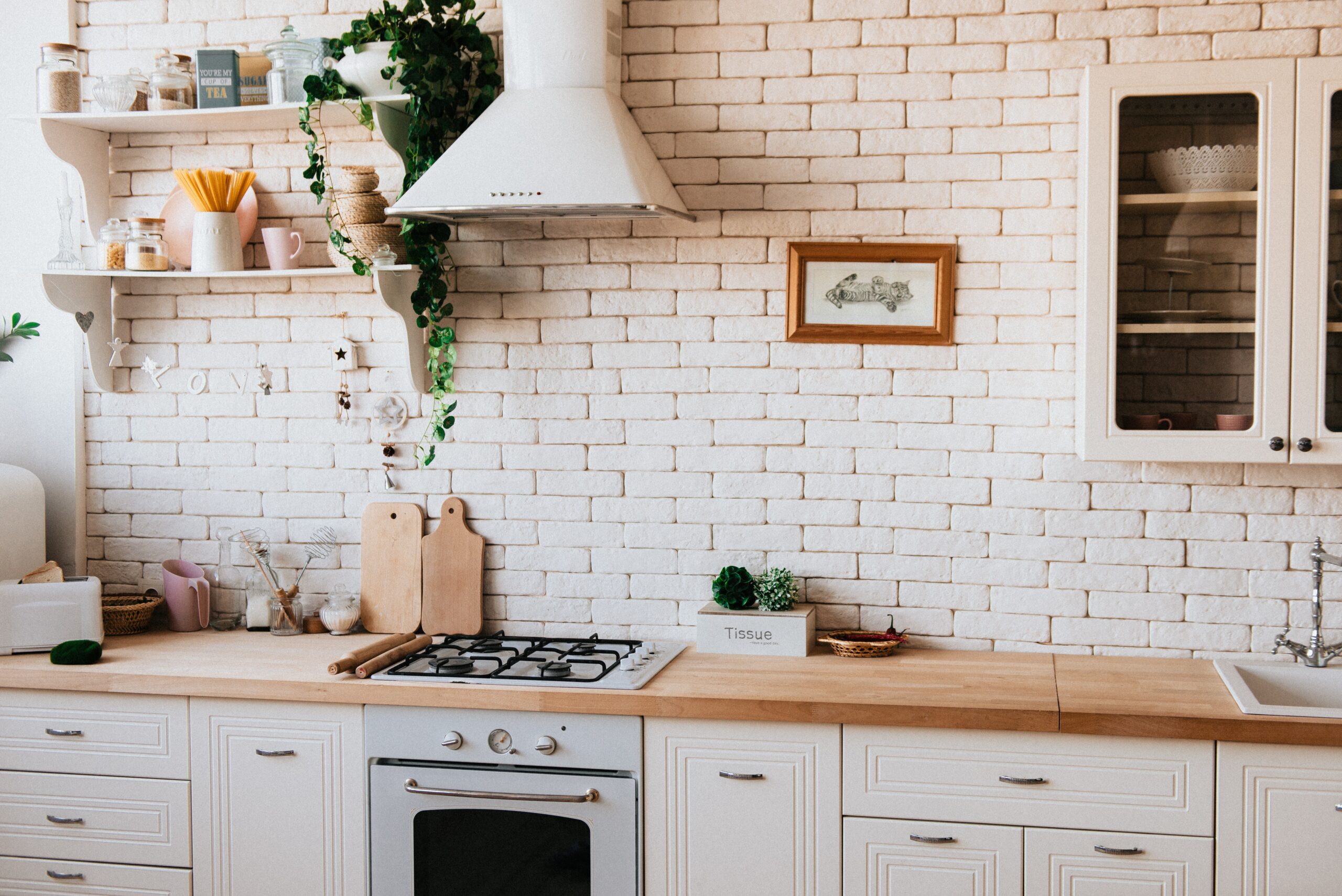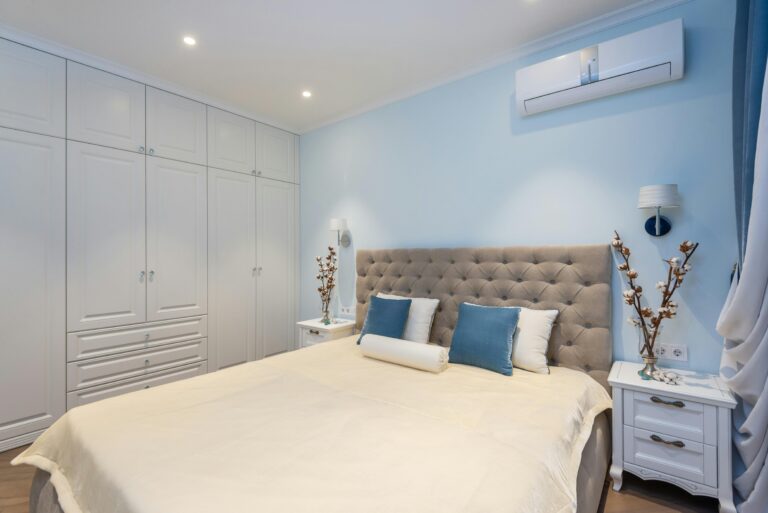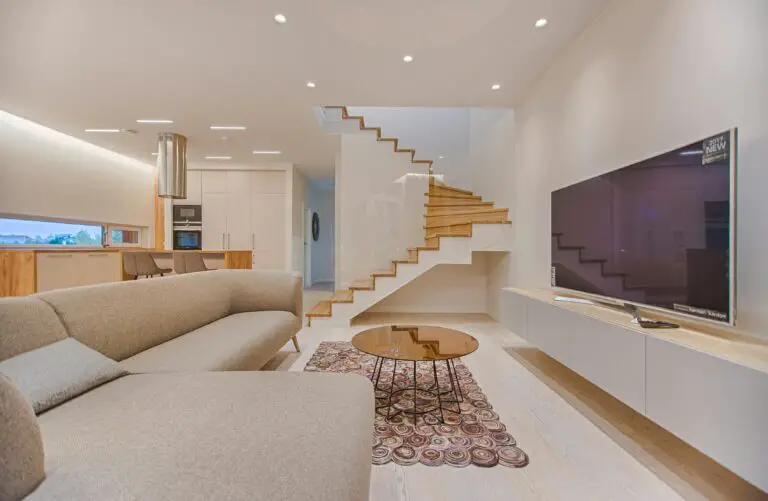When it comes to kitchen design, open shelving has become increasingly popular. It not only provides functional storage but also offers an opportunity to showcase your personal style and create a visually appealing kitchen space. However, styling open shelves can be a bit challenging as you want to strike the right balance between functionality and aesthetics.
In this comprehensive guide, we will explore various styling tips that will help you make the most of your open shelving in the kitchen.
I. Organizing the Open Shelving
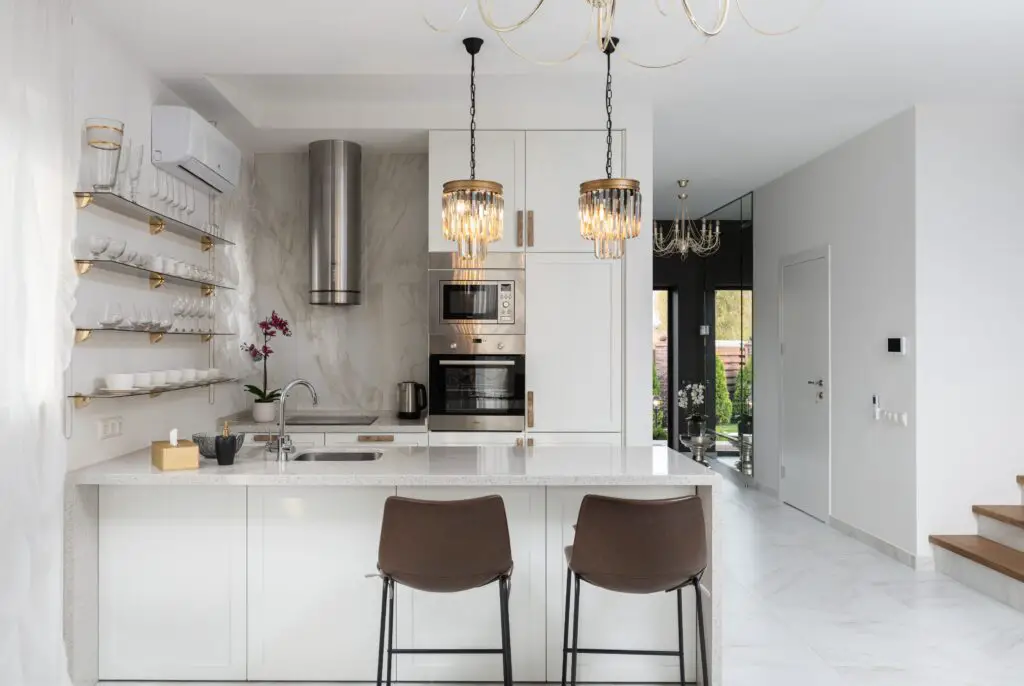
To begin styling your open shelving, it’s essential to organize your items in a thoughtful and practical manner. By grouping similar items together and utilizing storage containers and baskets, you can achieve a visually pleasing and functional arrangement.
1. Grouping Similar Items Together
To create a sense of order and coherence, categorize your kitchenware. Separate plates, glasses, cookware, and other items into their respective groups. This will not only make it easier to find what you need but also lend a sense of organization to your open shelves.
Additionally, consider arranging items based on their frequency of use. Place frequently used items within easy reach and reserve the higher or lower shelves for less commonly used items.
2. Utilizing Storage Containers and Baskets
Storage containers and baskets are your best friends when it comes to open shelving organization. Choose containers and baskets of appropriate sizes and styles that fit your shelves and complement your kitchen’s aesthetics.
These containers will help corral smaller items, such as spices or cooking utensils, preventing them from cluttering your shelves. Consider labeling the containers to enhance accessibility and streamline your cooking process.
II. Selecting Display-worthy Items
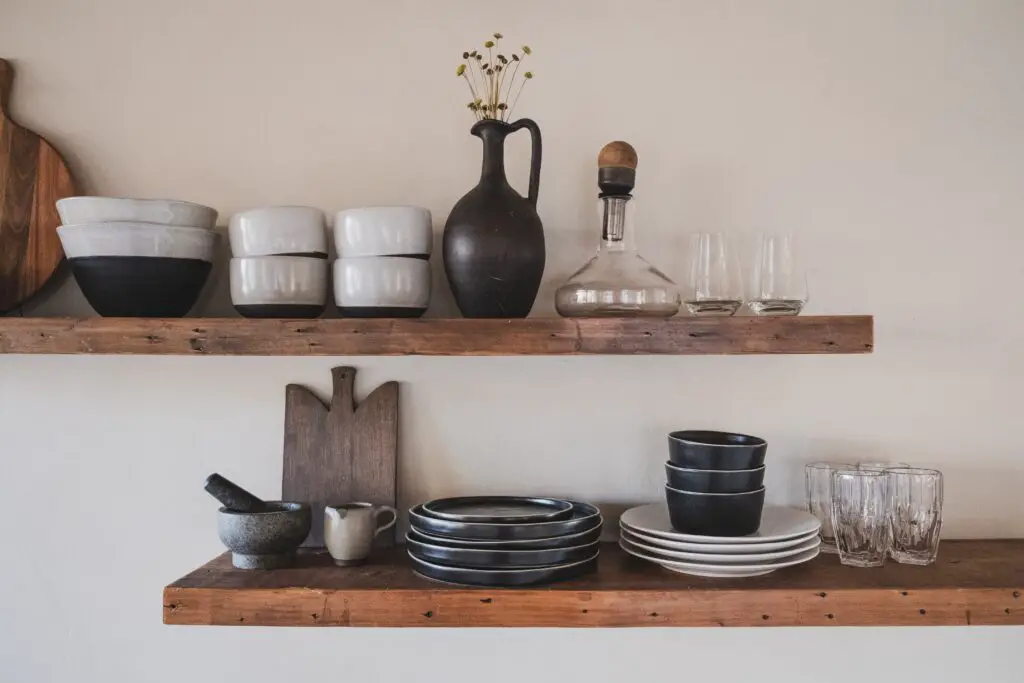
The items you choose to display on your open shelves play a crucial role in creating an attractive and visually pleasing arrangement. By showcasing attractive cookware and dishes, as well as incorporating decorative elements, you can add charm and character to your kitchen space.
1. Showcasing Attractive Cookware and Dishes
Use your open shelves as an opportunity to display your beautiful cookware and dishes. Opt for colorful or patterned plates and bowls that can act as focal points. Stack them in an artful manner or arrange them in a way that allows their unique designs to shine.
Additionally, highlight unique or vintage cookware, such as copper pots or antique serving dishes. These pieces add personality and a touch of nostalgia to your kitchen.
2. Incorporating Decorative Elements
In addition to functional items, consider incorporating decorative elements on your open shelves. Plants or herbs can add a refreshing touch of greenery, bringing life and vibrancy to your kitchen. Place potted herbs or small indoor plants on your shelves, ensuring they receive adequate sunlight and water.
Additionally, consider adding art or framed prints to the backdrop of your shelves. These decorative touches can create visual interest and serve as conversation starters.
III. Creating Balance and Symmetry
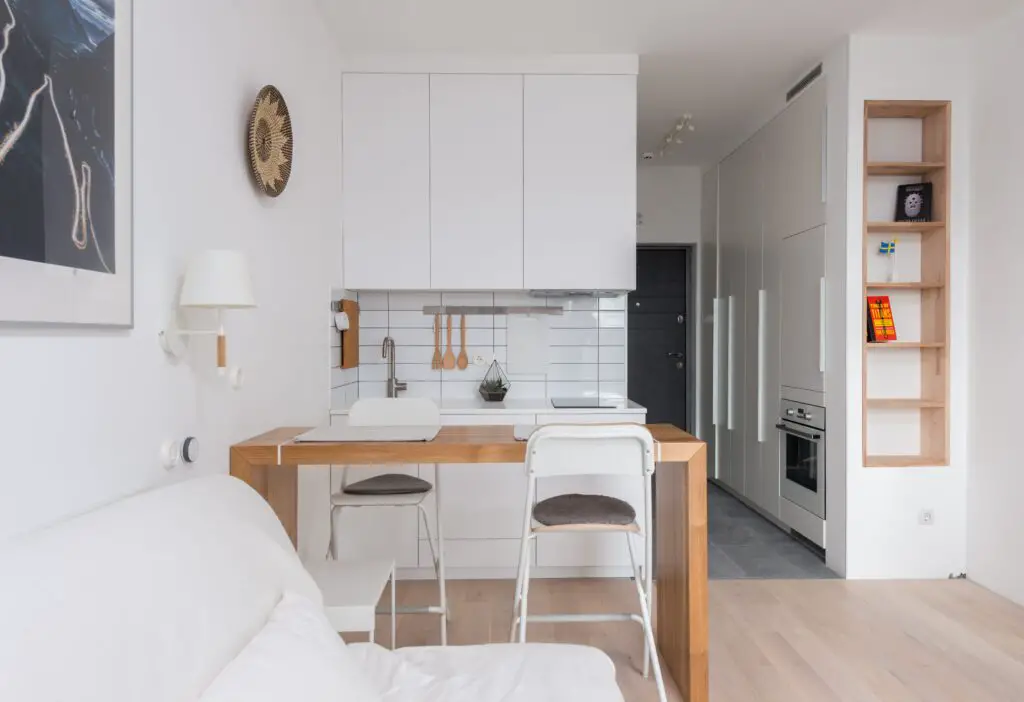
Achieving balance and symmetry is essential to create an aesthetically pleasing display on your open shelves. By carefully considering the heights and sizes of objects and ensuring symmetrical arrangements, you can create a visually balanced and harmonious look.
1. Balancing Heights and Sizes of Objects
Avoid monotony by varying the heights and sizes of objects on your open shelves. Stagger items of different heights to create visual appeal. For example, place a tall vase next to a stack of shorter plates or bowls. Mix and match tall and short objects to create a sense of depth and dimension. Experiment with different arrangements until you find a composition that is visually appealing and balanced.
2. Ensuring Symmetrical Arrangements
Symmetry can create a sense of order and calmness in your display. Aim for symmetry by placing items symmetrically on your open shelves. For instance, you can have a matching set of plates or glasses on each side of a central focal point.
Another way to achieve symmetry is by using odd-numbered groupings. Group items in sets of three or five, as odd numbers, are visually more pleasing and create a sense of rhythm and balance.
IV. Playing with Color and Texture
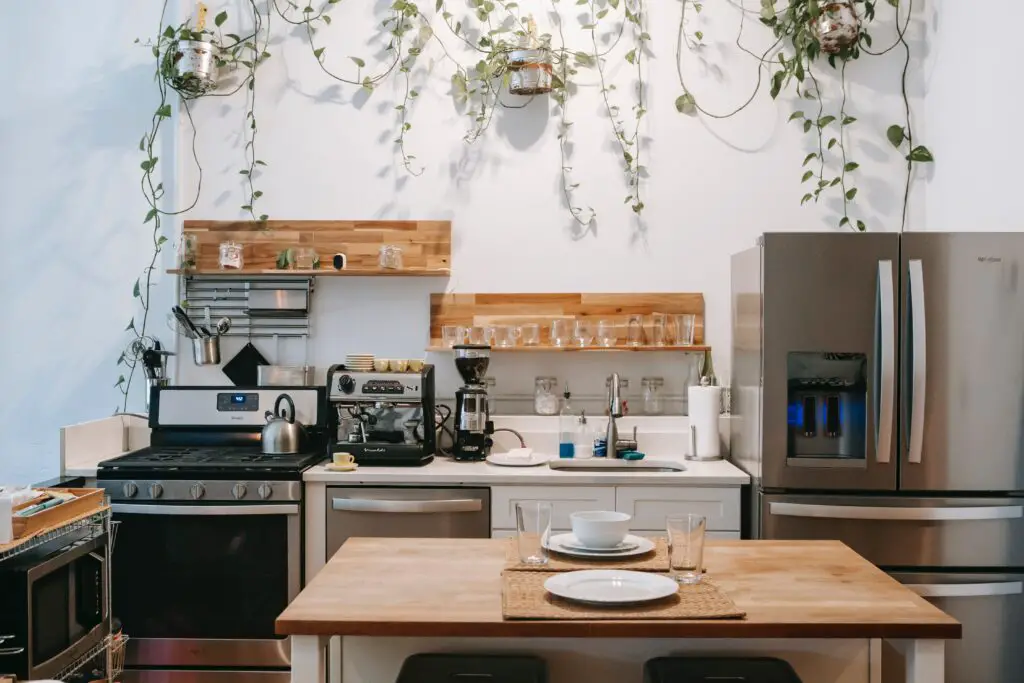
Color and texture are powerful tools to add visual interest and create a cohesive look on your open shelves. You can achieve a harmonious and visually appealing display by coordinating colors with your kitchen’s palette and incorporating different textures.
1. Coordinating Colors With the Kitchen’s Palette
When styling your open shelves, consider the existing color scheme of your kitchen. Match or complement the colors on your shelves with the overall palette to create a cohesive look. For example, if your kitchen features neutral tones, consider using white or earthy-colored dishes on your shelves.
Alternatively, if your kitchen has a bold color scheme, introduce pops of complementary or contrasting colors on your shelves to add visual interest and create focal points.
2. Incorporating Different Textures
Mix and match different materials and textures to add depth and visual variety to your open shelves. Combine items made of wood, glass, ceramics, or metal to create an intriguing display. For example, place a wooden cutting board alongside glass jars filled with colorful spices or a metallic colander.
Additionally, consider incorporating textiles or woven items, such as cloth napkins or woven baskets, to introduce texture and warmth to your display.
V. Styling Seasonally
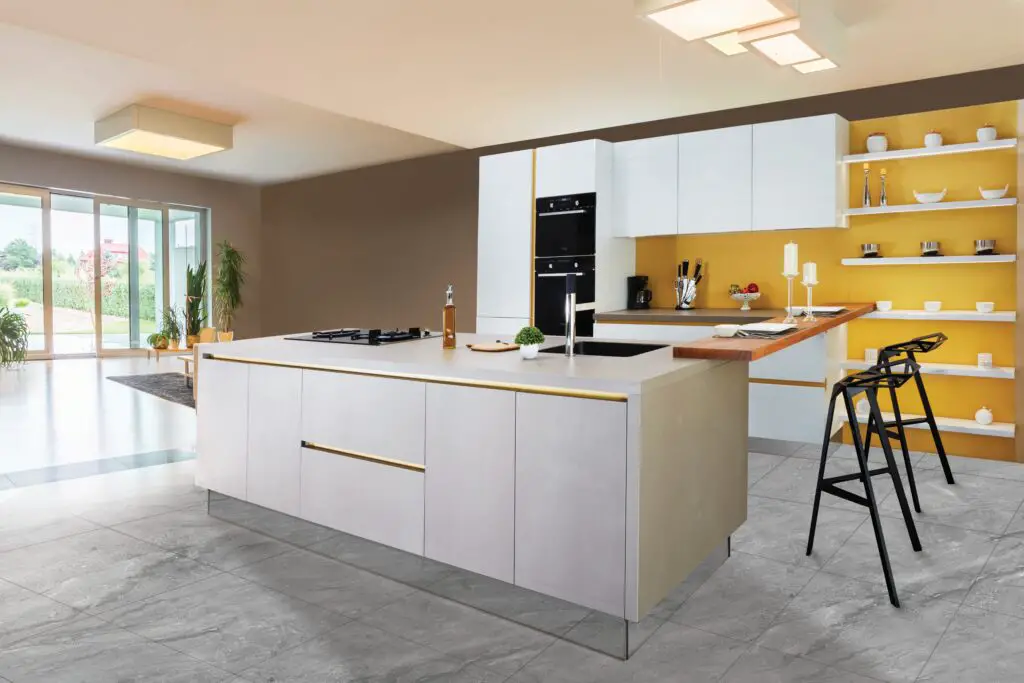
Consider styling your open shelving display seasonally to keep it fresh and exciting. By changing décor to match the season and rotating decorative elements periodically, you can infuse your kitchen with a sense of celebration and keep the display dynamic.
1. Changing Décor to Match the Season
Embrace the changing seasons by incorporating seasonal colors and motifs into your open shelving display. During spring, consider displaying fresh flowers or pastel-colored dishes. In the summer, bring in vibrant fruits or beach-themed elements. Fall calls for warm tones like orange and burgundy and rustic elements like pumpkins or wheat sheaves. Winter invites cozy touches like cinnamon sticks, evergreen branches, or holiday-themed decorations.
2. Rotating Decorative Elements Periodically
To prevent your open shelves from becoming stagnant, periodically rotate decorative elements. Swap out items, such as artwork or small decorative objects, to keep the display fresh and interesting. Consider changing decorative elements every few months or with each change of season. This rotation allows you to experiment with different looks and adapt your display to your evolving style and preferences.
VI. Maintaining Clean and Tidy Shelves
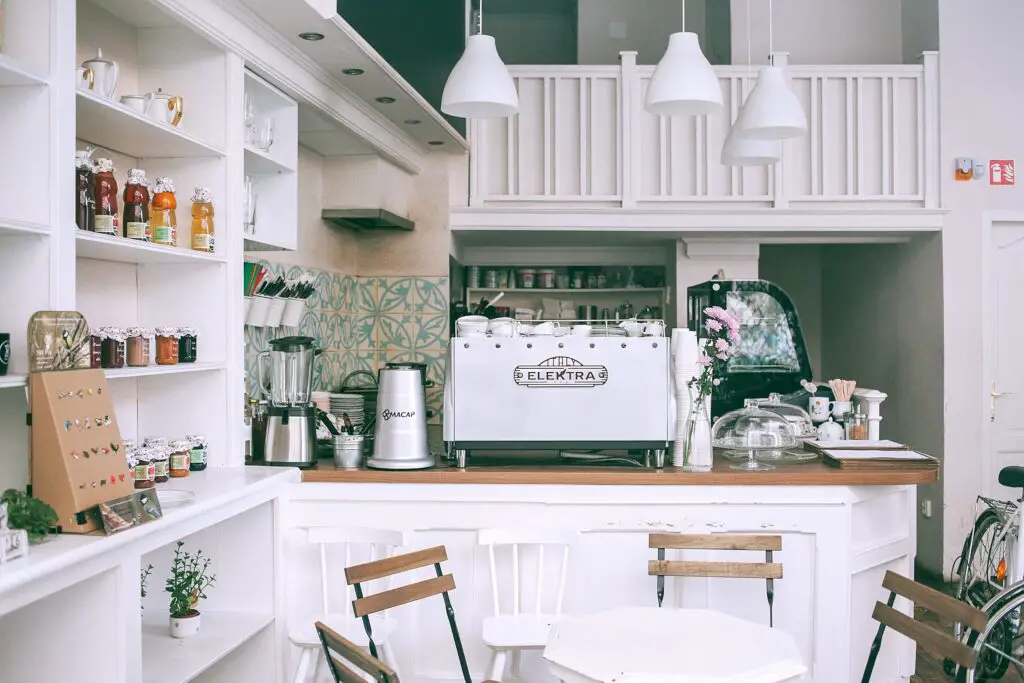
To ensure your open shelving remains visually appealing and functional, it is important to regularly declutter, organize, and clean your shelves. By removing unnecessary or unused items and keeping the shelves clean and dust-free, you can maintain an inviting and attractive kitchen space.
1. Regularly Decluttering and Organizing
Over time, open shelves can accumulate clutter. To prevent your display from becoming overwhelming, declutter and organize your shelves regularly. Remove items that you no longer use or need, and donate or store them elsewhere.
Reevaluate your display arrangements periodically, ensuring that the items on your shelves still reflect your style and meet your needs. This decluttering process will create more visual breathing room and allow your displayed items to shine.
2. Keeping Shelves Clean and Dust-free
Dust and dirt can accumulate on open shelves, detracting from the overall aesthetics of your display. Make it a habit to wipe down your shelves regularly using a soft cloth or duster. Pay attention to the corners and crevices where dust tends to accumulate.
For added protection and ease of cleaning, consider using protective covers or liners on your shelves. These can be easily removed and cleaned as needed, keeping your display looking fresh and tidy.
Conclusion
Styling open shelving in the kitchen offers a wonderful opportunity to showcase your personal style and create an aesthetically pleasing space. By following the styling tips outlined in this guide, you can transform your open shelves into a functional and visually appealing feature of your kitchen.
Remember to organize your items thoughtfully, select display-worthy pieces, create balance and symmetry, play with color and texture, style seasonally, and maintain a clean and tidy display.
Frequently Asked Questions (FAQs)
1. What are the benefits of open shelving in the kitchen?
Open shelving in the kitchen offers several benefits. It provides easy access to frequently used items, allows you to display your favorite kitchenware, adds a sense of openness and airiness to the space, and encourages organization and decluttering.
2. How do you choose the right storage containers for open shelving?
When selecting storage containers for open shelving, consider the size and style that complement your kitchen’s aesthetics. Opt for containers that are practical, easy to access, and fit the dimensions of your shelves. Clear or labeled containers can enhance visibility and organization.
3. How often should I rotate decorative elements on my open shelves?
It is recommended to rotate decorative elements on your open shelves every few months or with each change of season. This allows you to keep your display fresh and experiment with different looks, adapting to your evolving style and seasonal themes.
4. How can I prevent my open shelves from becoming cluttered?
Regular decluttering and organizing are key to preventing open shelves from becoming cluttered. Remove items you no longer use or need, and reevaluate your display arrangements periodically. Keep only the items that reflect your style and meet your functional needs.
5. What can I do to keep my open shelves clean and dust-free?
To keep your open shelves clean, regularly wipe them down using a soft cloth or duster. Pay attention to corners and crevices where dust tends to accumulate. Consider using protective covers or liners on your shelves for added protection and ease of cleaning.
